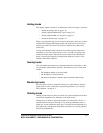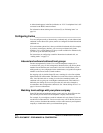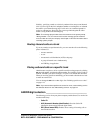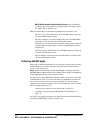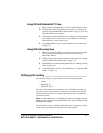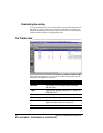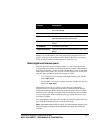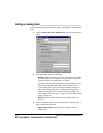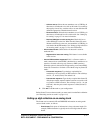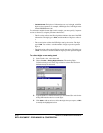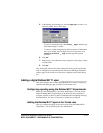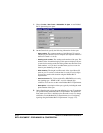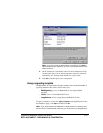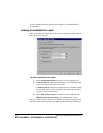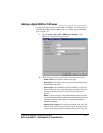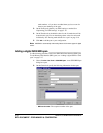
CHAPTER 5. MANAGING TRUNKS AND SPANS 5-11
BETA DOCUMENT - PRELIMINARY & CONFIDENTIAL
n Calls are sent to. Select the auto attendant, user or IVR Plug-in
that answers all inbound voice calls on this trunk. If you change
the target by time of day, send the calls to an auto attendant and
define the appropriate scheduled transfer action.
n Faxes are sent to. Select the auto attendant, user or IVR Plug-in
that answers all inbound fax calls on this trunk. See “Setting up
fax routing” on page 5-7 for more information.
n Retrieve DID digits from this analog line. Check this box to
collect DID digits on the line. When checked, Strata CS routes
inbound calls directly to the user, auto attendant, or IVR Plug-in
associated with the DID number. See “Setting up digit collection
on an analog trunk” on page 5-11 for more information.
n Allow outbound calls. Check this box if the trunk is used for
outbound calls.
n Registered for least cost routing. This feature is not available
in this version.
n Centrex/PBX transfers supported. If this is a Centrex trunk or a
trunk connected to an external PBX, check the box to enable users to
transfer or forward calls using only Centrex or PBX extensions.
When this option is selected (and if supported by your Centrex/PBX),
Strata CS can transfer or forward a call without using any Strata CS
trunks.
n Pre-transfer sequence. Type the keys required before
transferring a call to a Centrex or PBX extension. The valid keys
are 0-9, *, #, and & (Flash). The default is &.
n Post-transfer sequence. Type the keys required after Strata CS
dials the pre-transfer sequence and the extension, to transfer a call
to a Centrex or PBX extension. The valid keys are 0-9, *, #, and
& (Flash). After the post-transfer sequence is dialed, Strata CS
hangs up.
4. Click
OK to add the trunk to your configuration.
Before Strata CS can use the new trunk, you must start it from the Device Monitor
(see “Restarting stations or trunks” on page 11-6).
Setting up digit collection on an analog trunk
The format used to transmit ANI and DID/DNIS information on analog trunk
varies with the carrier, as follows:
n Fixed format. Each piece of information is always the same length. For
example, DID information is typically the last four digits that the caller
dialed.



